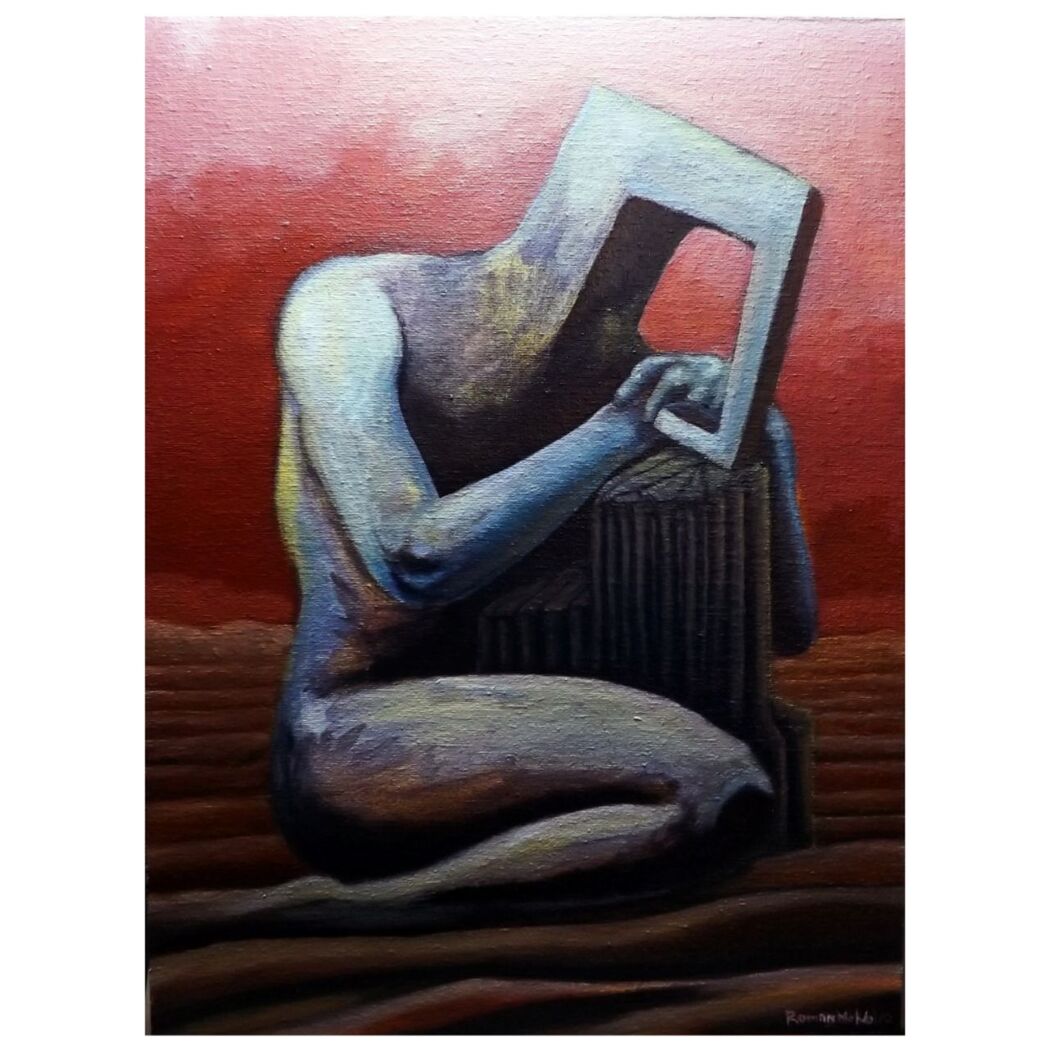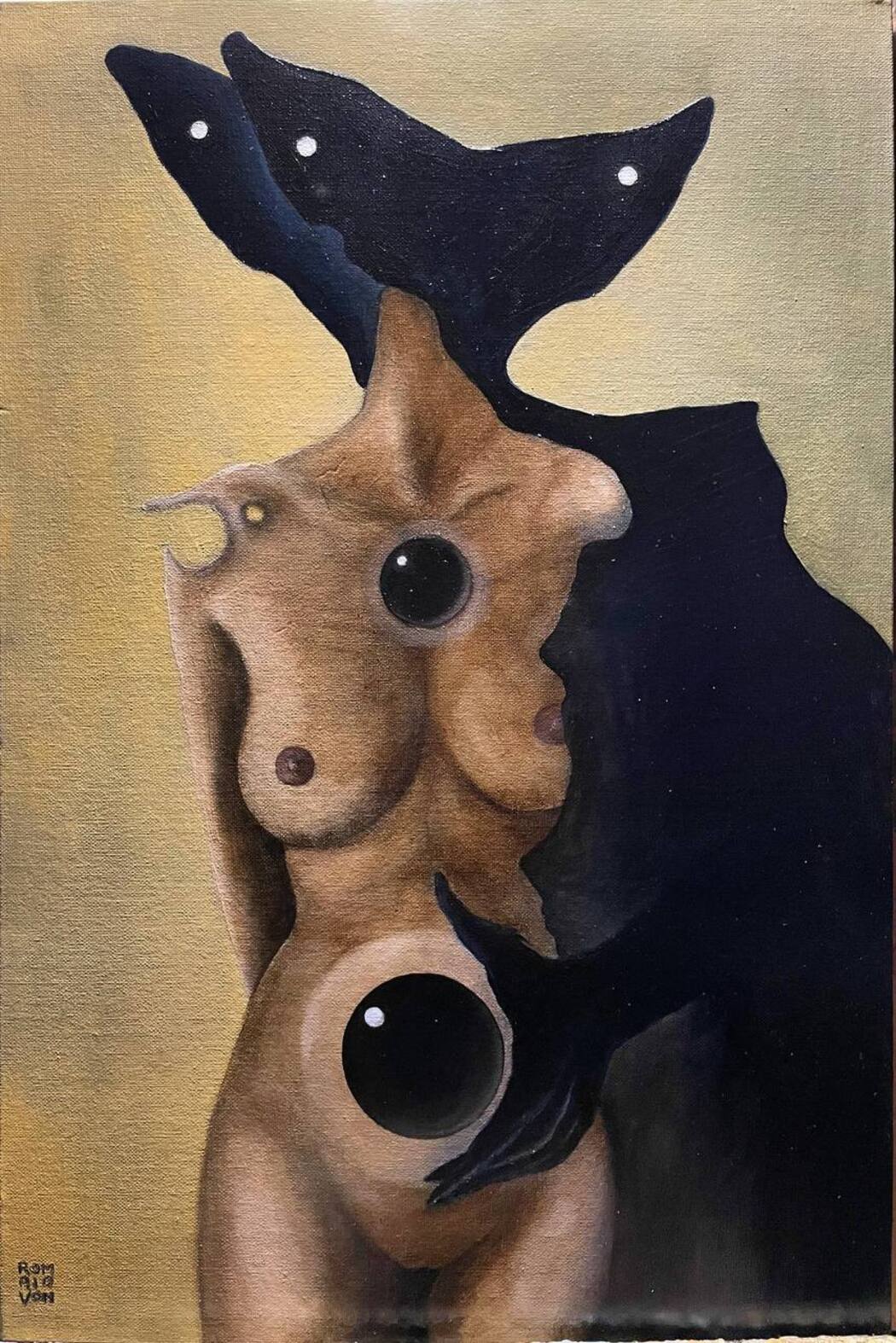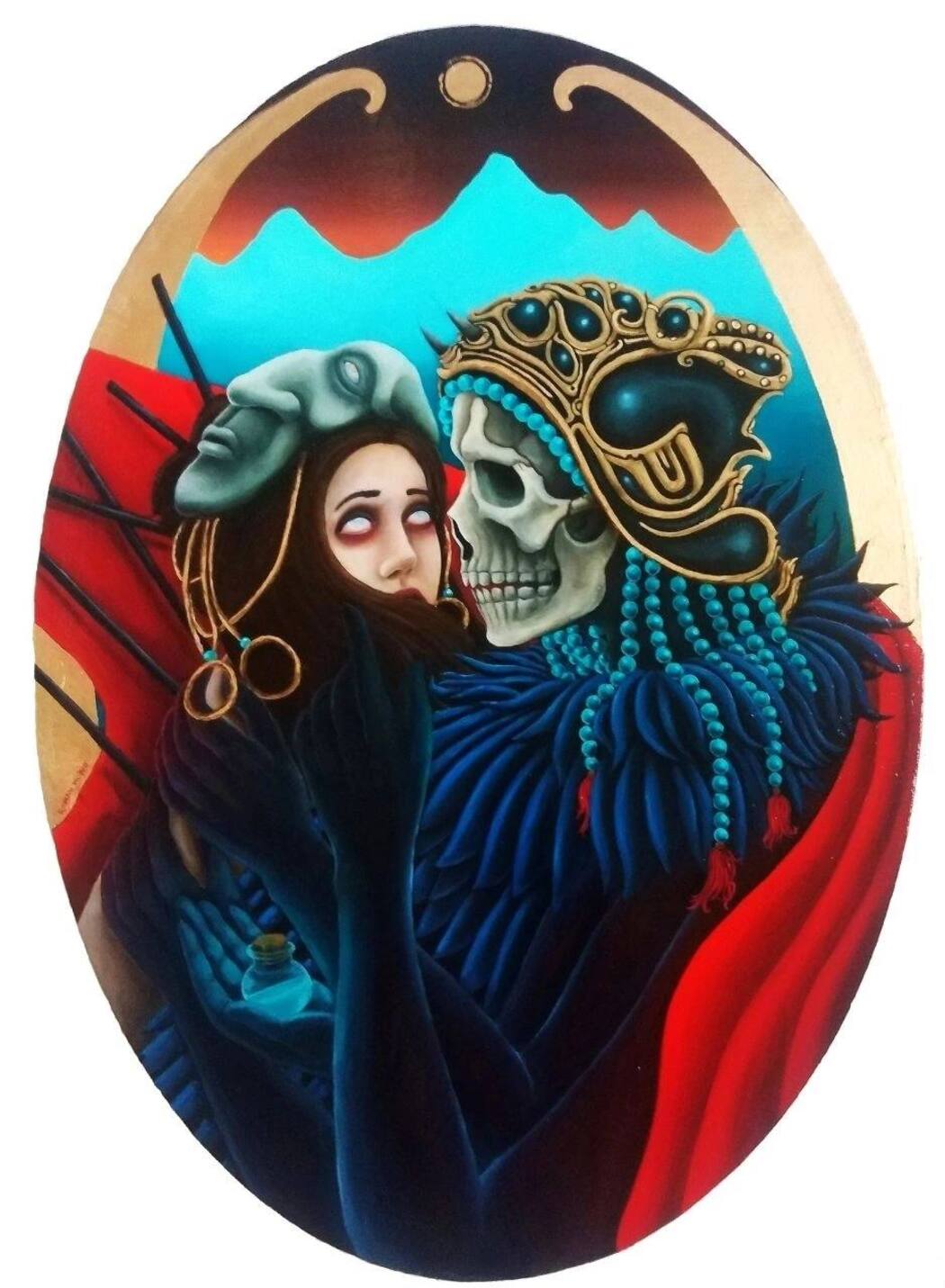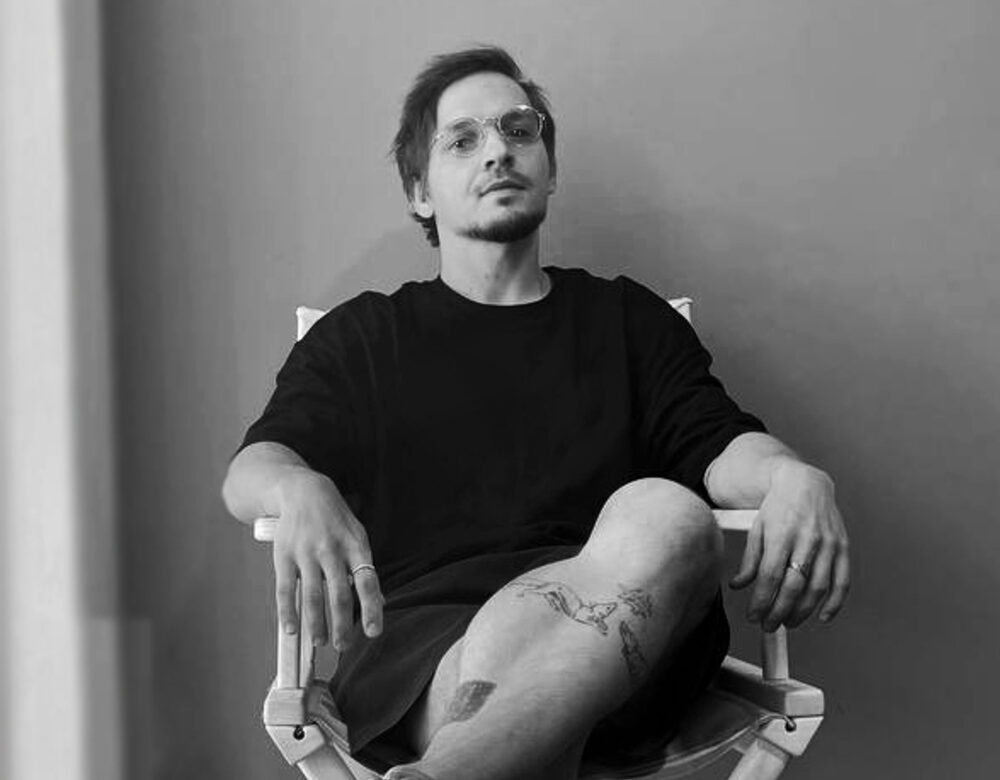Roman Molvo
To begin with, I’d like to ask: what led you to art? What key turning points do you personally consider defining on this path?
I’ll try to briefly tell how I became an artist. I come from a poor family and spent my childhood either in a small village or in a cramped, overcrowded communal apartment on the outskirts of Moscow. I was never interested in art, my only creativity was childhood drawings of monsters and toys I made out of wire. It was my way to escape reality, because most of the time people around me were drinking and fighting.
As I grew up, I decided to become a doctor, but lost my place in the state-funded program. Later, I almost graduated as a psychologist, but again lost the funding. Once more, there wasn’t enough money, and I had to work a lot.
When I turned 21, I got into a terrible car accident. I was sleeping in the back seat and got lucky. Two other passengers died. I also died — I had clinical death — but they managed to bring me back.
Since the moment I opened my eyes, I started seeing images on blank canvases, walls, sheets of paper. They appear from nothing, become photorealistic — I just need to concentrate a little. I began tracing these images, and later realized I could draw, and that this is probably my path. If I get lucky again, I might be able to contribute something to culture.
That’s why for the last nine years I’ve been trying to create new works more often. Unfortunately, there’s probably no magic… I have to spend many hours on a drawing to get even a small chance that the painting will turn out interesting.
Curiosity pushes me to keep creating. It sounds romantic, but I wouldn’t advise anyone to choose a path connected with visual art — being an artist is damn hard.
 Roman Molvo | A Personality Unable to Live in Harmony with Itself | 2019
Roman Molvo | A Personality Unable to Live in Harmony with Itself | 2019
Your works explore deep psychological themes like hypnagogia and archetypes. How do these concepts influence the creation of your art, and how do you incorporate them into your visual storytelling?
Hypnagogia, the transitional state between wakefulness and sleep, opens the door to intuitive images and symbols that I use in my work. During this state, I allow my mind to wander, capturing the images that appear and transferring them onto the canvas. This allows me to create works that not only reflect but also explore subconscious experiences.
Archetypes as universal symbols — I use them to connect my work with the shared human experience, creating resonant images that can be perceived on an intuitive level.
You mentioned exploring the unconscious and shadow aspects. Can you talk about how these elements manifest in your paintings and sculptures?
If we recall Jung, shadows are the hidden, often repressed parts of our personality that can be both a source of fear and of concealed desires. Sometimes, shadowy beings appear in my paintings — usually they resemble black silhouettes, reminiscent of human figures.
In my work, I often use dark and rich colors to convey the grim and mysterious aspects of the human experience. These tones create an atmosphere of depth and draw the viewer into the world of their own thoughts.
 Roman Molvo | Your Favorite Shadow | 2021
Roman Molvo | Your Favorite Shadow | 2021
Your art is described as an invitation to the viewer to explore unexplored territories of the mind. How do you envision the viewer’s experience when interacting with your works?
Wow. I can’t imagine what goes on in people’s minds when they look at my drawings — I just hope they at least spark interest, not disgust.
The themes of legends and werewolves are fascinating. How do you connect these mythical elements to your contemporary approach to art?
It’s a reference to childhood. As children, we all loved listening to scary stories and reading books about monsters hiding under the bed or in dark corners. These stories shaped our fears and stirred our imagination. I drew my first monsters when I was a child.
Keeping a child’s vivid imagination alive into adulthood greatly helps me continue creating new drawings.
In this way, a love for dark myths and mystical stories becomes not only a subject of exploration, but also a way to connect our childhood perception of fear with contemporary questions of identity and inner struggle.
Can you discuss your exploration of automatic writing and how it relates to your visual practice?
Automatic writing is a practice and method of creating artwork that allows me to relatively safely go beyond ordinary perception. Let’s call it a free flow of consciousness, when the writer lets their mind wander without controlling the process. Historically, automatic writing is associated with spiritualist séances, where participants tried to establish contact with spirits, allowing them to “dictate” the text. This creates a kind of connection between art, the psyche, and spirituality.
I use automatic writing as a way to create abstract works. When I begin writing, I don’t think about the content or form of the text. I simply let my hand move across the paper, layer by layer, and at some point, I lose awareness of what I’m writing. This flow state allows me to go deeper into the unconscious.
An hour later, or by the evening, I notice that the work is complete—but the content of the text becomes unclear to me. Still, the effect creates something unique and filled with a certain message.
 Roman Molvo | Girl and Death | 2021
Roman Molvo | Girl and Death | 2021
Your work spans multiple mediums, including painting, photography, and sculpture. How do these different media influence the conceptualization of your projects?
I always look for inspiration in various materials—whether it’s old film rolls, newspapers, or other found objects. The most important thing for me is that something sparks interest and evokes emotion.
Each medium has its own characteristics and possibilities. For example, painting allows me to express thoughts through color and form. Photography, on the other hand, captures a moment and can tell a story or convey an atmosphere that inspires me. I enjoy experimenting with different techniques, including montage and collage, to create layered visual narratives.
Lately, I’ve also started editing short black-and-white video clips. This format allows me to explore movement and time—something that static media can’t offer.
What role does introspection play in your creative process? Do you actively engage in self-reflection while creating your art?
Yes, I do engage in self-reflection from time to time when creating my work, as it helps me better understand my thoughts. But more often, I find myself unable to fully grasp the meaning of the images that appear in the painting. I can spend hours immersed in my imagination and drawing, yet the final piece may remain a mystery to me.
Still, it’s this uncertainty and mystery that often become a source of inspiration. I believe that art can be multilayered and open to many interpretations, and even if I can’t explain every detail, I trust the viewer to interpret them in their own way.
This dialogue between my work and the viewer is what makes the process of creating art especially valuable to me.


Leave a Reply